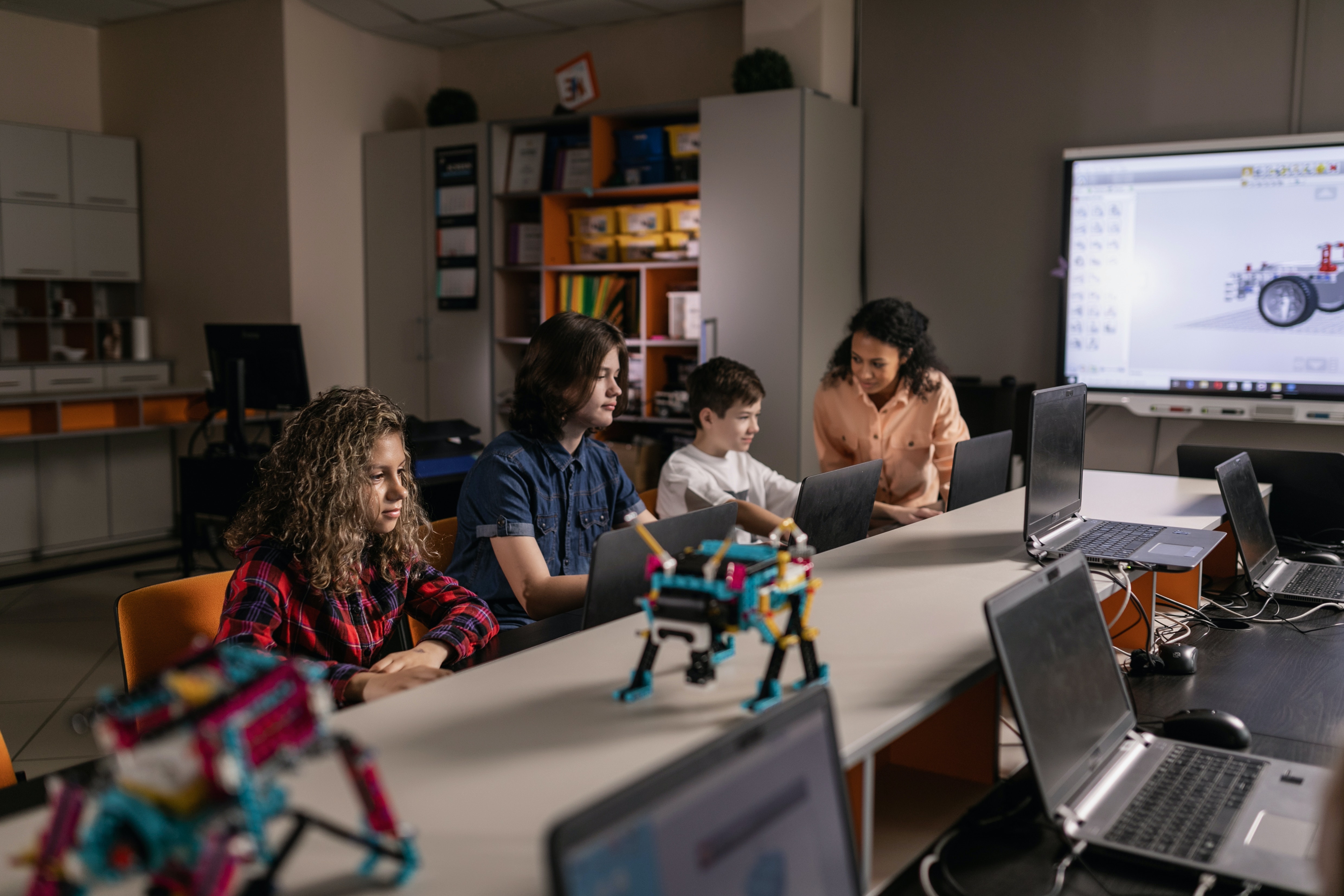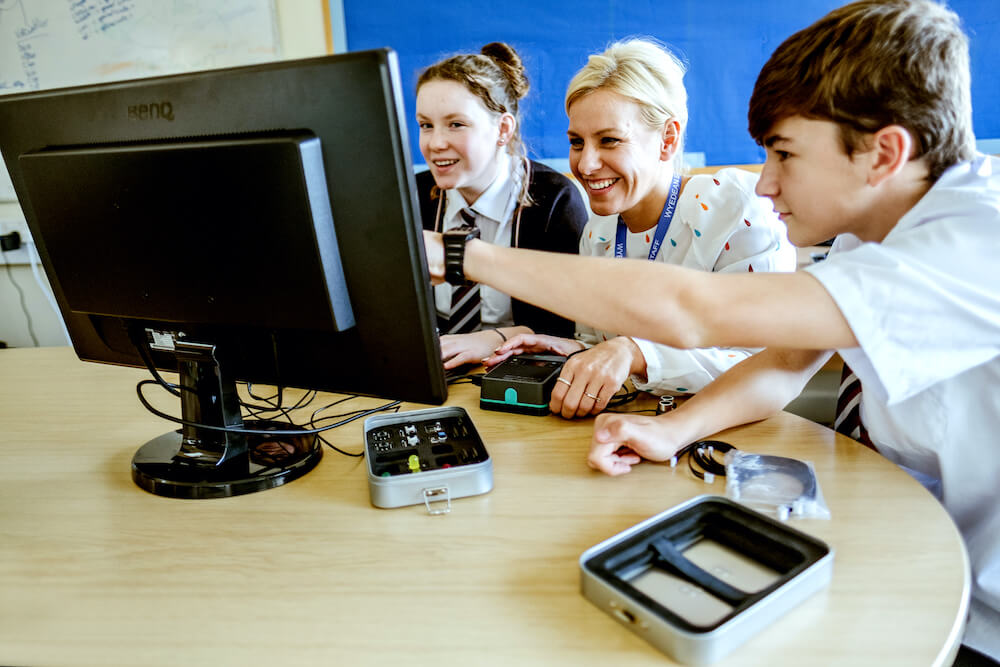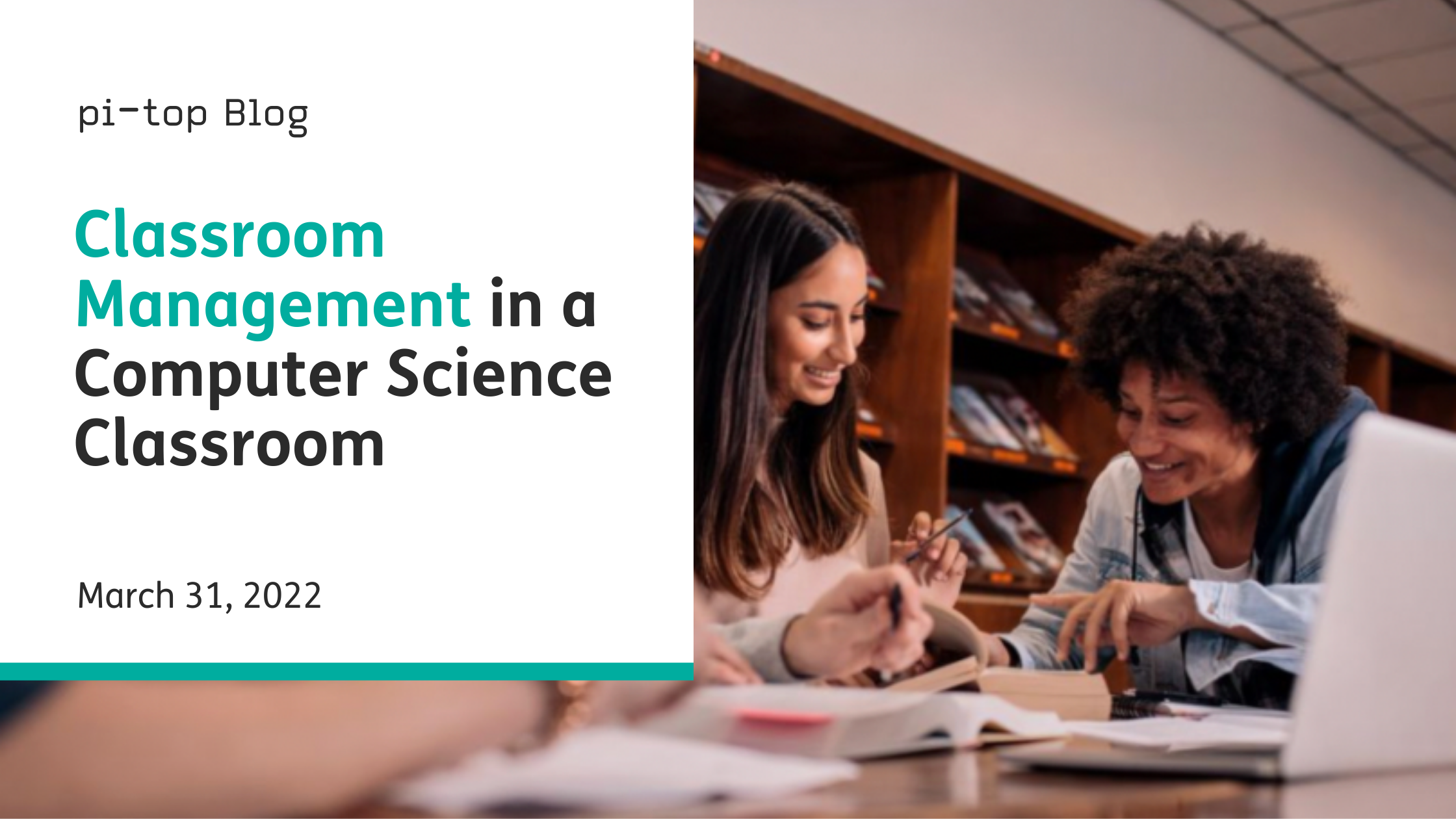Classroom management becomes a whole different ball game when you have 25+ students solely working behind computer screens or tablets.
Even with diligent monitoring, it is difficult to see if all of your students are using their devices responsibly throughout the class period. There are a few best practices and tools that, paired with your traditional classroom management routine, can help to make your computer science class run smoothly.
Tips for Classroom Management in a Computer Science Classroom
As with any classroom, clear rules and expectations are imperative to a computer science class. For instance, if your school does not have a responsible use policy when it comes to technology, it would be beneficial to create your own.

These rules should outline expectations regarding what students should be doing while using the technology, rules for responsible behaviors, and consequences if these rules are not met. Another thing to consider is how to handle common device issues.
One could argue that routine procedures are equally important in managing the classroom. Depending on the student’s age, teachers would most likely have specific ways to run their classes.
-
Numbering System:
If you have a class set of devices we recommend using a numbering system for organizational purposes. Teachers can mark their devices with a sticker or even load a specific background on it. This helps with identifying the technology quickly and can correlate with where it should be stored in the classroom.
-
Assigning Devices:
When using a numbering system, the next step is to assign the technology to a student. With this practice, they will know what device to pick up, which one to sit at, etc.
Another reason for this procedure is to help aid the performance of the technology because it minimizes the amount of user profiles and data stored on them. In terms of teaching responsibility, if something goes wrong or the device is damaged, you will know who to speak to.
-
Beginning Class:
For younger children, teachers may want to give instructions on a task before students are allowed to turn on the device. This ensures students are paying attention to what is expected of them.
In this approach, the introductory phase is out of the way and so teachers can circulate and monitor or troubleshoot the moment work begins. With older students, it may be best to require them to log in when they are waiting for class to begin. Getting students used to coming in, taking their seat, and logging in means that instructional minutes aren’t devoted to those things, maximizing time for learning.
-
End of Class:
Regardless of age, there should always be procedures to end the class. Do you want children to log out early, put the devices away, charge them, etc? Consider what works best for you but stay consistent.
-
Free Time:
Educators always want children to work bell to bell. When extra class time remains, the agenda can be adjusted. But have you ever had just a few students that finish their work early? Do you dread having them play cool math or work on other things? In these instances it is great to plan an additional assignment just for early finishers. The focus of these assignments should be something that enriches the concepts they are currently learning.
-
Participation:
Depending on your grading structure, giving a daily participation grade can be a useful tool. This may be a small grade but acts as a reminder that how they behave while on the computers matters. Small grades add up too and this is something that is easy to achieve! Rewards, such as bonus points, can be equally effective.
-
Monitoring Progress:
If children are working on a long project, plan frequent checkpoints throughout the assignment. These checkpoints can be daily or weekly depending on the nature of the project, but the value is that students are accountable at each stage of the work. Maybe work out a timeline, or have one on one “consultations” with the teacher when each part should be completed. A timeline keeps students on task and guarantees that students have a reference point to refer to each day. These checkpoints also act as a formative assessment.
Want to dive deeper into computer science classroom management and get even more useful tips for your class? We're hosting a webinar on April 21, 2022 covering all the best practices for managing technology in the classroom. Register here.
To see all our upcoming webinars, click here.

Classroom Management Software for the Computer Science Classroom
There are several options for software that gives teachers an eagle-eye view of what’s happening on their students’ screens. Some of these tools include a Zoom-like view where you can see all of your students’ computer screens on your desktop at once. Others include override controls where you can block certain sites, lock students into one single site, or even close tabs remotely from your device.
Some of the leading classroom management software programs meant for use with technology include GoGuardian, Dyknow, and Lanschool.

Like many teachers know, the mere existence of tools like this is enough to deter some students from inappropriate technology use. But for those who like to test the limits, you can catch and redirect any unwanted behaviors before they get out of hand by having clear rules and procedures, and staying consistent.
Ultimately, you know the best way to run your classroom, but when introducing technology these tips and resources can lead to a smooth transition!

.png?width=2240&name=Webinar%20Blog%20Banner%20(3).png)